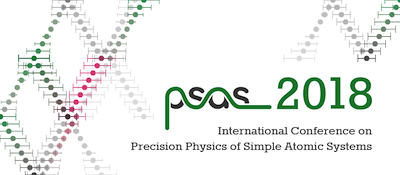text provided in the uploaded pdf
abstract provided as attached pdf-file
for abstract see the attached pdf-file
Single particles in traps allow for clean investigations of basic interactions and also for the determination of fundamental constants. This has been demonstrated by investigations of Quantum Electrodynamics (QED) with respect to the g-factor of the free electron [1] and of hydrogen-like or lithium-like ions [2 - 4], which form the most precise determinations of the fine-structure constant and...
The polarizability in atomic physics is important to determining the frequency standard [1], magic wavelengths and the tune-out wavelengths [2,3] of the atom in the optical lattice clock. It is also used to calculating the long-range interactions between atoms [4], in the cold atom research. However the higher order corrections are still researched inadequately [1,5].
In this work, starting...
please see the attached file for abstract
for abstract see attached pdf file
We consider bound states between an atomic nucleus and a muon,
so called muonic atoms. Especially for high charge numbers, the sur-
rounding atomic electrons do not influence the muon and the system
is essentially hydrogenlike. Just as in normal atoms, there is fine and
hyperfine splitting, but the significance of the various contributions
differs dramatically. In particular, nuclear...
text provided in the uploaded pdf
Abstract provided in the attachment.
For abstract see attached pdf-file.
We present a new method of spectroscopy, utilizing a drift effect to disperse
charged particles in a uniformly curved magnetic field. The curved field results
in a drift of the charged particles perpendicular to the radius of the curvature
and to the magnetic field, which is proportional to the particle’s momentum.
A spatial-resolving detector will determine the momentum spectra.
The first...
For abstract, please see attached PDF file.
For abstract, please see the attached PDF file.

